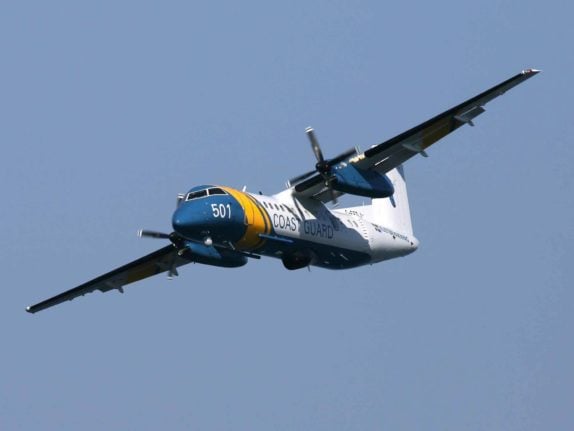“The larger leak is now no longer visible on the surface while the smaller one instead has increased slightly,” the coast guard said in a statement.
The observations were made during an overflight on Monday at around 8am of the two pipelines suspected to have been damaged in an act of sabotage, it added.
“At that time, the smaller leak was approximately 30 metres in diameter,” the coast guard said.
A spokesman for the operator of the Nord Stream pipelines, Nord Stream AG, said on Saturday that the leaking from the Nord Stream 2 pipeline had stopped because an equilibrium had been reached between the gas and water pressure.
Gazprom, which owns 51 percent of the pipeline project, said Monday “it was working to lower the pressure in the B line of the Nord Stream 2 pipeline” by pumping out the natural gas of the pipe, so that the pipeline could be examined safely.
Both Nord Stream 1 and 2 are made up of two lines and both leaks on Nord Stream 2 were on the A line.
The Russian energy giant added that it did not rule out the possibility that the Nord Stream 2 B pipeline could still be used to deliver gas.
“If the decision is taken to start deliveries via the Nord Stream 2 B-line, natural gas will be pumped into the pipeline after the integrity of the system has been checked and the supervisory authorities have confirmed such a possibility,” Gazprom said in a statement on its Telegram channel.
Built in parallel to the Nord Stream 1 pipeline, Nord Stream 2 was intended to double the capacity for Russian gas imports to Germany. But Berlin blocked the opening of the newly-completed Nord Stream 2 in the days before the Russian invasion of Ukraine.
All of the leaks, which were discovered on Monday last week, are in the Baltic Sea off the Danish island of Bornholm. Both Washington and Moscow have denied responsibility.
Danish authorities had estimated that all the gas trapped in the pipelines would have escaped by Sunday. Two of the leaks are located in the Swedish exclusive economic zone, and the two others in the Danish one.
The Nord Stream 1 and 2 pipelines, which connect Russia to Germany, have been at the centre of geopolitical tensions as Russia cut gas supplies to Europe in suspected retaliation against Western sanctions following Moscow’s invasion of Ukraine.
While the pipelines are not currently in operation, they both still contained gas before they fell victim to apparent sabotage.



 Please whitelist us to continue reading.
Please whitelist us to continue reading.
Member comments